Dents on your car can be frustrating and often lead to expensive repairs. But what if you knew How to Fix a Dent Without Damaging Your Car’s Paint? In this blog post, we’ll explore some practical techniques that you can use to repair dents while preserving your car’s paint job.
Dents can happen to any car, whether from a minor parking mishap or a more severe collision. While traditional dent repair methods may involve sanding, filling, and repainting, these can be costly and time-consuming. Luckily, there are alternative methods that you can try to fix dents without damaging your car’s paint.
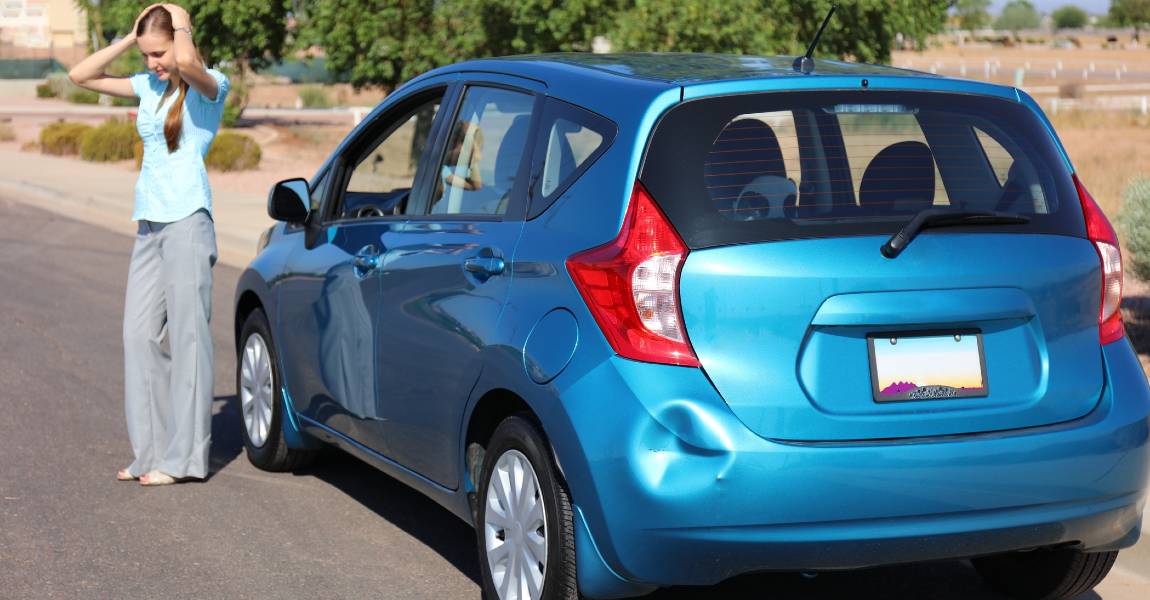
In this article, we’ll discuss techniques such as using a plunger, boiling water pliability method, a hairdryer, and compressed air. We’ll also provide step-by-step instructions and tips to ensure you can successfully repair your car’s dents without causing any harm to its paint job.
What is Paintless Dent Repair?
Paintless Dent Repair (PDR) is a technique used to remove dents and dings from vehicle body panels without traditional methods such as filling, sanding, and repainting.
Here are some key points about PDR:
- PDR is a non-invasive and cost-effective method for repairing minor indentations and dings caused by hail, parking lot mishaps, and other minor accidents.
- It involves using Special tools to carefully massage the impression from the inside of the panel without damaging the paint or finish.
- PDR can be used on steel and aluminum panels, making it suitable for many vehicles.
- The process is relatively quick, with most repairs taking just a few hours to complete.
- PDR retains the vehicle’s original factory finish, preserving its value and avoiding the need for repainting.
- It is environmentally friendly, eliminating the need for harmful chemicals and reducing waste from traditional repair methods.
- PDR is preferred by auto insurance companies as it is cost-effective and helps maintain the vehicle’s resale value.
- The technique requires expert auto body repair technicians with specialized training to assess and repair them using PDR techniques properly.
- PDR is unsuitable for all types of damage, such as deep creases or major body damage. In such cases, traditional repair method may be necessary.
Benefits of Paintless Dent Repair
Paintless Dent Repair (PDR) offers a cost-effective solution for removing dips in the vehicle’s surface and removing dings from a vehicle without repainting, preserving the vehicle’s original factory finish and value.
Additionally, PDR is a time-efficient process, often taking less time than traditional dent repair methods, allowing vehicle owners to get back on the road quickly.
- Cost-effective: It is often more affordable than traditional dent repair methods, as it eliminates the need for repainting or replacing panels.
- Time-saving: This can be completed in a shorter time than traditional dent repair, reducing the time a vehicle spends in the repair shop.
- Retains vehicle value: Since PDR preserves the original factory finish, it helps maintain the vehicle’s value by avoiding the need for repainting.
- Environmentally friendly: PDR eliminates harmful chemicals and reduces the waste generated during the repair process.
- Versatile: Can repair a wide range of dips in the surface, including minor dings, hail damage, and creases.
- Insurance-approved: Many insurance companies recognize the benefits of PDR and cover the cost of this repair method.
- High customer satisfaction: Often results in seamless repairs that are virtually undetectable, leading to high customer satisfaction rates.
Statistics on PDR
- According to the Automotive Repair Industry Report, the PDR market is projected to grow at a CAGR of 3.7% from 2021 to 2026.
- A study by the International Carwash Association found that 78% of consumers prefer PDR over traditional repair methods due to its cost-effectiveness and time-saving benefits.
- The National Alliance of Paintless Dent Repair Technicians reported that PDR can save customers up to 50% in repair costs compared to traditional repair methods.
- The PDR Market Research Report estimates that the global PDR market will reach $4.2 billion by 2026, driven by the increasing demand for cost-effective and environmentally friendly repair solutions.
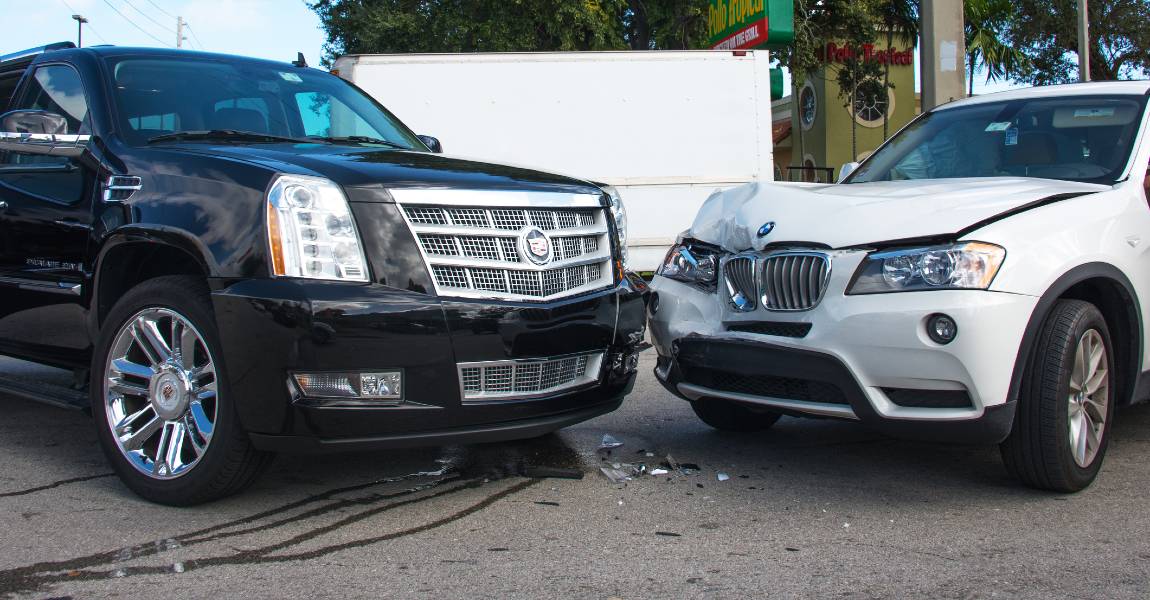
What are Some Causes of Vehicle Dents?
1. Accidents: The most common cause of vehicle dents is accidents, whether it be a collision with another vehicle, a stationary object, or even a minor fender bender. These accidents can result in damage to the vehicle’s body.
2. Hail storms: Hail storms can cause significant damage to the surface of a vehicle. The impact of hailstones hitting the vehicle’s surface can leave visible impressions and sometimes even break the paint surface or windshield.
3. Parking Lot Mishaps: Parking lots are notorious for causing vehicle damage. Door dings, where another car door hits your vehicle, are typical. Shopping carts, bicycles, and other objects can also cause indentations if they accidentally hit or scrape against your vehicle.
4. Vandalism: Unfortunately, some individuals intentionally damage vehicles by scratching, denting, or keying them. Vandalism can leave unsightly impressions and damage to the vehicle’s body.
5. Falling Objects: Falling objects, such as tree branches, construction debris, or even items dropped from overhead buildings, can cause vehicle to dip in the surface. Depending on the size and weight of the object, the dents can range from minor to severe.
6. Sports and Recreational Activities: During sports or recreational activities, such as golf, baseball, or basketball, errant balls can strike vehicles and cause damage. These incidents often occur near sports fields or recreational areas.
7. Natural Disasters: Natural disasters like earthquakes, floods, and hurricanes can cause significant damage to vehicles. The force of these events can result in debris hitting the vehicle and leaving visible impressions.
8. Poorly Maintained Roadways: Potholes, speed bumps, and uneven road surfaces can cause vehicles to bounce or jolt, leading to dips in the surface and damage to the vehicle’s body. These occurrences are more likely to happen when driving at high speeds or in areas with inadequate road maintenance.
9. Door Swings: Accidentally swinging open car doors can hit nearby vehicles, causing damage. This commonly occurs in tight parking spaces or when parked vehicles are near each other.
10. Animal Collisions: Collisions with animals, such as deer or large birds, can damage the vehicle’s body. The impact can cause visible dips in the car’s surface, scratches, and even shattered windshields.
Types of Dents
Several different types can occur, each with its characteristics and severity.
Here are some common types:
1. Door Dings: These are typically minor and round in shape, often caused by another car’s door hitting your car. They are usually shallow and may not affect the paintwork.
2. Crease Dents: These are long, straight dents caused by various factors, such as collisions with a pole or a shopping cart. They can be more challenging to repair, often requiring specialized techniques and specialty tools.
3. Hail Dents: Hail damage occurs when a car is exposed to a hailstorm. These are typically minor and scattered across the car’s surface. Depending on the severity, they may require PDR or conventional body repair methods.
4. Collision Dents: These are usually more severe and result from a collision with another vehicle or object. Collisions can cause various shapes and sizes, ranging from minor dings to significant structural damage. Repairing collision body damage often involves bodywork and repainting.
5. Bumper Dents: These are specific to the car’s bumpers, designed to absorb impact. These can occur due to minor accidents, such as rear-end collisions or parking mishaps. Depending on the severity, bumper dents may be repaired using PDR or require replacement. Plastic bumpers may require additional steps, such as heating and reshaping.
6. Bodyline Dents: This refers to damage that occurs along a car’s body lines and contours. These larger dents can be more challenging to repair as they require precise techniques to restore the car’s original shape and maintain the bodyline.
7. Rust Dents: These occur when rust forms beneath the car’s paint, causing it to bubble and deform. This often requires extensive repairs, including rust removal, bodywork, and repainting.
It is essential to note the severity and repair method for each type. Some minor damage may be repaired using PDR techniques, which involve massaging them out from the inside of the panel without affecting the paint. However, more severe ones may require conventional body repair methods, including filling, sanding, and repainting.
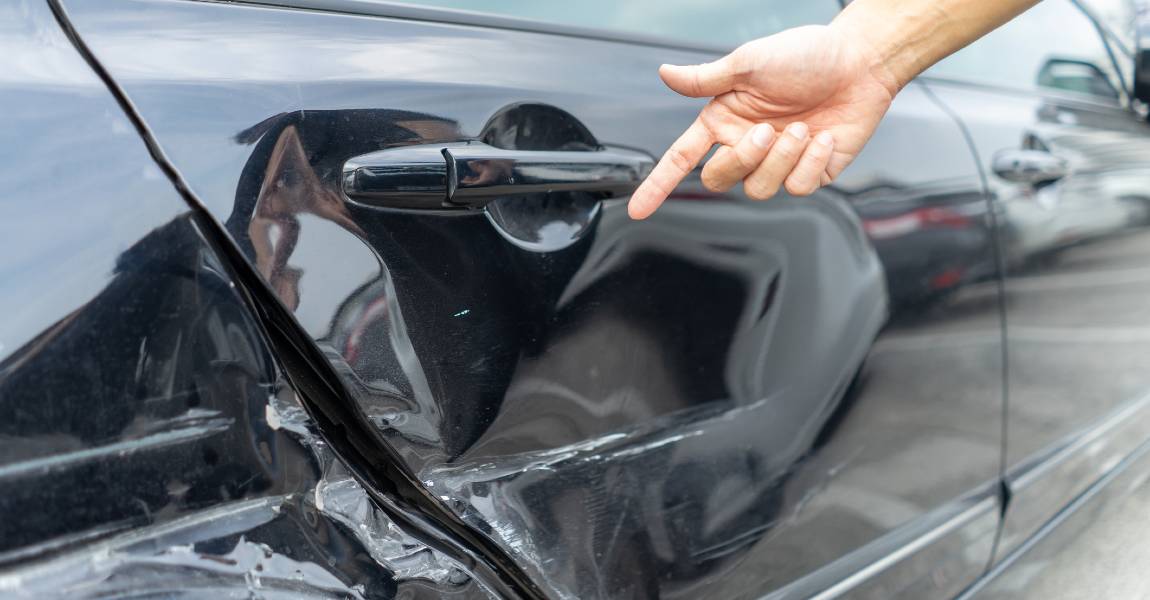
How to Fix a Dent Without Damaging Your Cars Paint
If you want to fix it without damaging your car’s paint; consider hiring an auto shop service specializing in professional repair. They will use techniques such as PDR and touch-up paint to restore your car’s appearance without causing any further damage to the paint.
Follow these step-by-step instructions how to repair it your car without causing any damage to the paint.
Step 1: Assess
- Begin by carefully examining the dent. Determine its size, shape, and location on the car’s body. This will help you determine the best approach for fixing it without damaging the automotive paint.
Step 2: Gather the necessary tools and materials
- Before starting the repair process, ensure you have all the necessary tools and materials. This may include a plunger, heat gun or hairdryer, boiling water, aluminum foil, rubbing compound, polishing compound, microfiber cloth, and automotive wax.
Step 3: Apply heat
- Apply heat with a gun or hairdryer. Move the heat source in a circular motion, gradually heating the area for a few minutes. This will help soften the metal and make it more pliable for the next step.
Step 4: Use a plunger
- Place the plunger over the dent and firmly press it against the surface. Create a strong seal between the plunger and the car’s body. Pull the plunger back quickly and forcefully to remove the impression, creating suction to help pop it out.
Step 5: Apply hot water and aluminum foil
- Boil a pot of water and pour it directly onto it. Immediately cover it with aluminum foil, pressing it down firmly. The combination of hot water and aluminum foil will cause the metal to expand, helping to push it out.
Step 6: Assess it again
- After applying heat, using a plunger, and applying hot water, reevaluate the damage to see if it has improved. Repeat the previous steps until it is entirely or significantly reduced.
Step 7: Polish the area
- Once it’s fixed, use a rubbing compound to smooth out any imperfections or scratches in the surrounding area. Apply the compound with a microfiber cloth, using gentle circular motions. Follow up with a polishing compound to restore the car’s paint to its original shine.
Step 8: Apply automotive wax
- To protect the newly repaired area and ensure a seamless finish, apply a layer of automotive wax. This will help to blend the repaired section with the rest of the car’s body and provide a protective barrier against future damage.
Step 9: Clean up
- Finally, clean any residue or debris left behind from the repair process. Use a clean microfiber cloth and automotive cleaner to wipe down the affected area and remove any excess compounds or wax.
Remember, if it is too large or complex to fix on your own, you should seek professional assistance from an auto body repair shop to avoid causing further damage to your car’s paint.
Tools Needed for Paintless Dent Removal
PDR is a technique used to repair dents on vehicles without the need for traditional bodywork methods. This process requires specific tools designed to access the dent from behind and gently manipulate the metal back into their original shape.
Here is a list of the tools needed for PDR, along with their definitions:
1. Dent Removal Rods: These are long, slender rods made of stainless steel or aluminum. They have various shapes and sizes to reach different areas of the vehicle. Removal rods apply pressure and push it out from the inside.
2. PDR Glue Pulling Kit: This kit includes a hot glue gun, glue sticks, and various pulling tabs. The glue gun is used to apply adhesive to the pulling tabs, which are then attached to the dent. The tabs are pulled, allowing it to pop out.
3. Slide Hammer: A slide hammer is a specialized tool used with glue-pulling tabs. It attaches to the tabs and provides a pulling force to remove them. The slide hammer is handy for larger dents.
4. Knockdown Tool: A knockdown tool is a small metal rod with a flat or rounded tip. It is used to gently tap down any high spots or crowns that may remain after being pushed out. The knockdown tool helps to achieve a smooth and even surface.
5. Dent Lifter: This lifter is a device that uses suction to lift them from the vehicle’s surface. It is beneficial for larger dents or when access from behind is limited. The lifter can be adjusted to provide the necessary pulling force.
6. PDR Lights: PDR lights are used to provide proper lighting during the dent removal process. They help highlight the sunken contours and make it easier to see any imperfections. LED lights are commonly used for their brightness and color accuracy.
7. PDR Line Board: A-line board is a reflective board that views the dent from different angles. By positioning the board behind the dent, the automobile technician can see the reflection and accurately assess the progress of the repair. The board helps to identify any remaining low or high spots.
8. PDR Tap-Down Set: A tap-down set consists of various tips made of plastic or rubber. They are used with a knockdown tool to tap down high spots or crowns gently. The different tips provide different levels of softness, allowing for precise adjustments.
9. Dent Removal Pliers: These pliers are specialized pliers with curved or angled jaws. They are used to grip and manipulate the metal from behind to push it out. The pliers provide a better grip and control than using hands alone.
10. Heat Gun: A heat gun is used to apply heat to the dented area. The heat helps to soften the metal, making it more malleable and easier to manipulate. It is beneficial for removing dents from plastic or aluminum panels.
These tools are essential for performing PDR effectively. However, it is important to note that PDR requires skill and experience to achieve optimal results. It is recommended to seek professional assistance or undergo proper training before attempting PDR.

FAQs
Can I repair a dent and not damage my car’s paint?
Yes, it is possible to fix it without damage using the metal to expand, making it easier to pop it back into place.
What is a suction cup puller?
A suction cup puller is a tool that use suction to pull out a dent from your car’s surface. It creates a vacuum seal, allowing you to apply pressure and gradually pull it out.
How does a dent pop work?
A dent pop is a tool designed to push dents out from the inside of your car’s body panel. It typically consists of a handle and a metal rod with a flat or rounded tip that you insert behind the dent and use to push it out.
Are dent repair kits effective?
Dent repair kits can be effective for minor dents. These kits often include tools like suction cups, dent pops, and other accessories to fix dents. However, their effectiveness may vary depending on the size and severity of the damage.
Are there any risks involved in fixing it myself?
While DIY repair methods can be successful, there are risks involved. If not done correctly, you could damage your car’s paint or cause further paint damage to the body panel. It’s important to follow instructions carefully and assess the complexity of the damage before attempting a fix yourself.
When should you get professional PDR help for a repair?
If you need more clarification about your ability to fix the dent without damaging your car’s paint or if it is large, deep, or located in a difficult-to-reach area, it’s best to seek professional help. A professional auto body shop will have the expertise and proper tools to repair it effectively and safely.
Conclusion
In conclusion, PDR (Paintless Dent Repair) is a highly effective method for fixing dents in cars without causing any damage to the paint. This technique uses specialized tools and techniques to gently massage the dent from the inside out, restoring the car’s original shape.
By opting for PDR, car owners can save time and money compared to traditional dent repair methods that involve repainting.
If your car has a dent that needs fixing, consider contacting a professional PDR technician. They have the expertise and equipment to restore your car’s appearance without compromising its paint job. Don’t let dents diminish the beauty of your vehicle, take action and schedule a PDR service today!
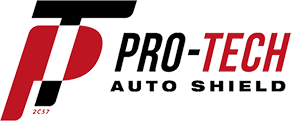




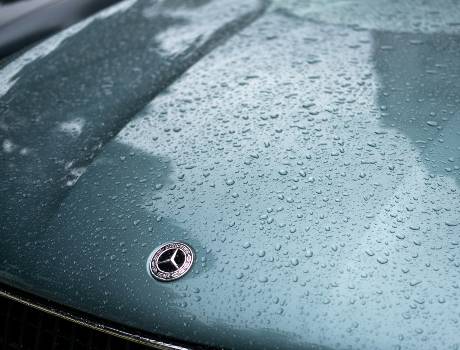
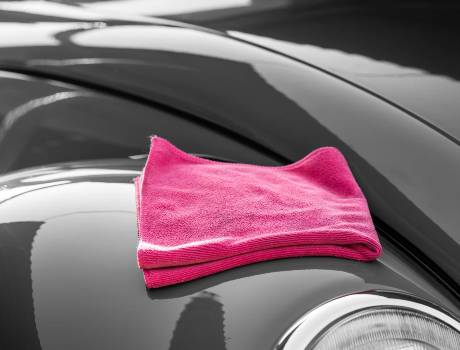

WHAT OUR CLIENTS ARE SAYING